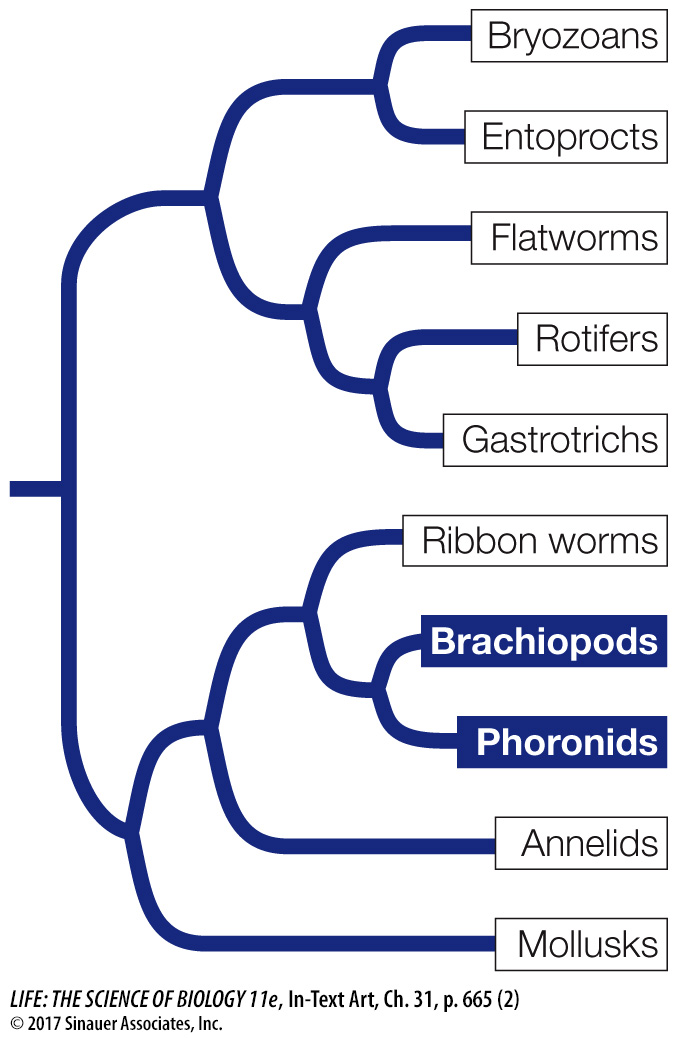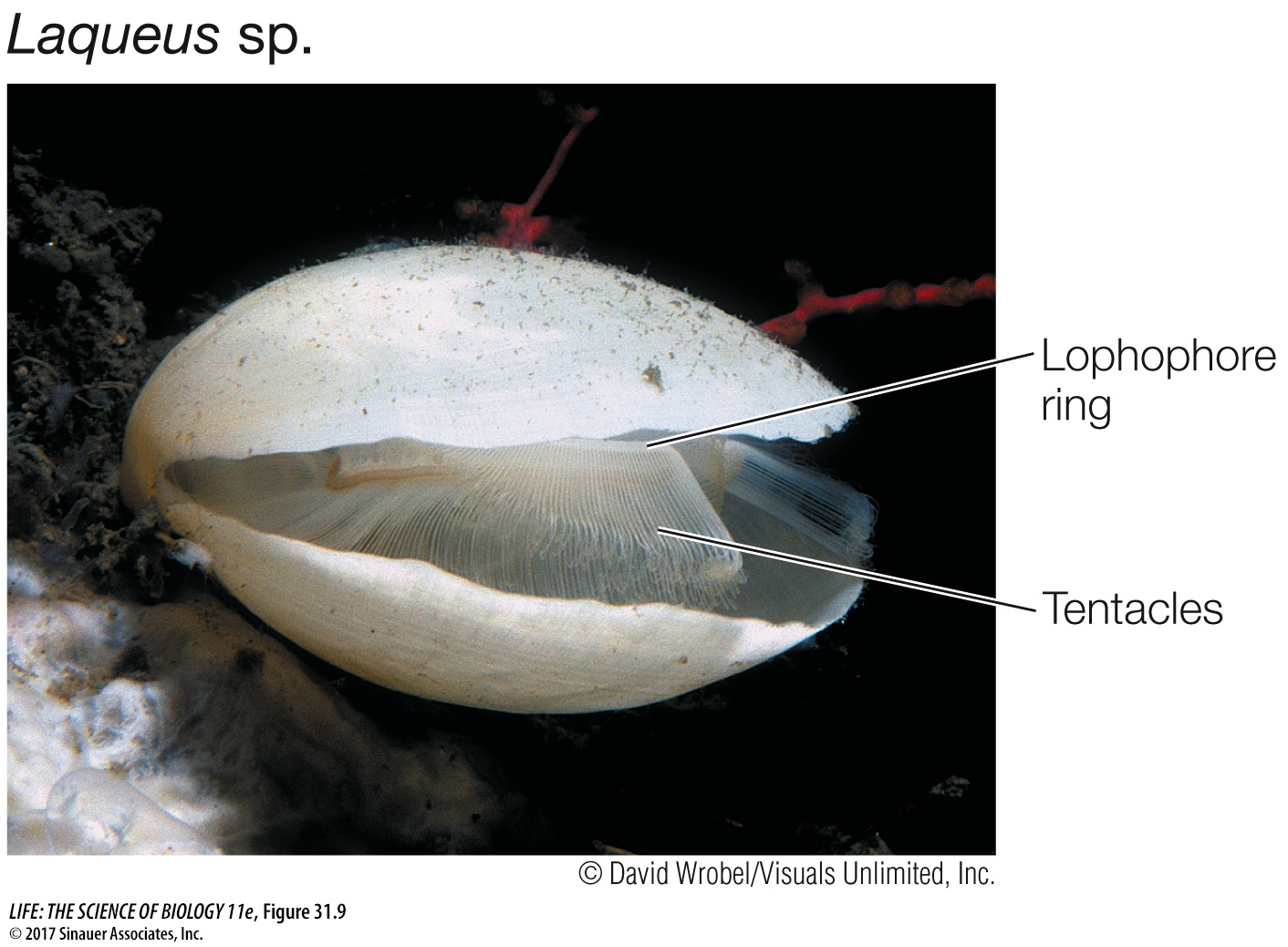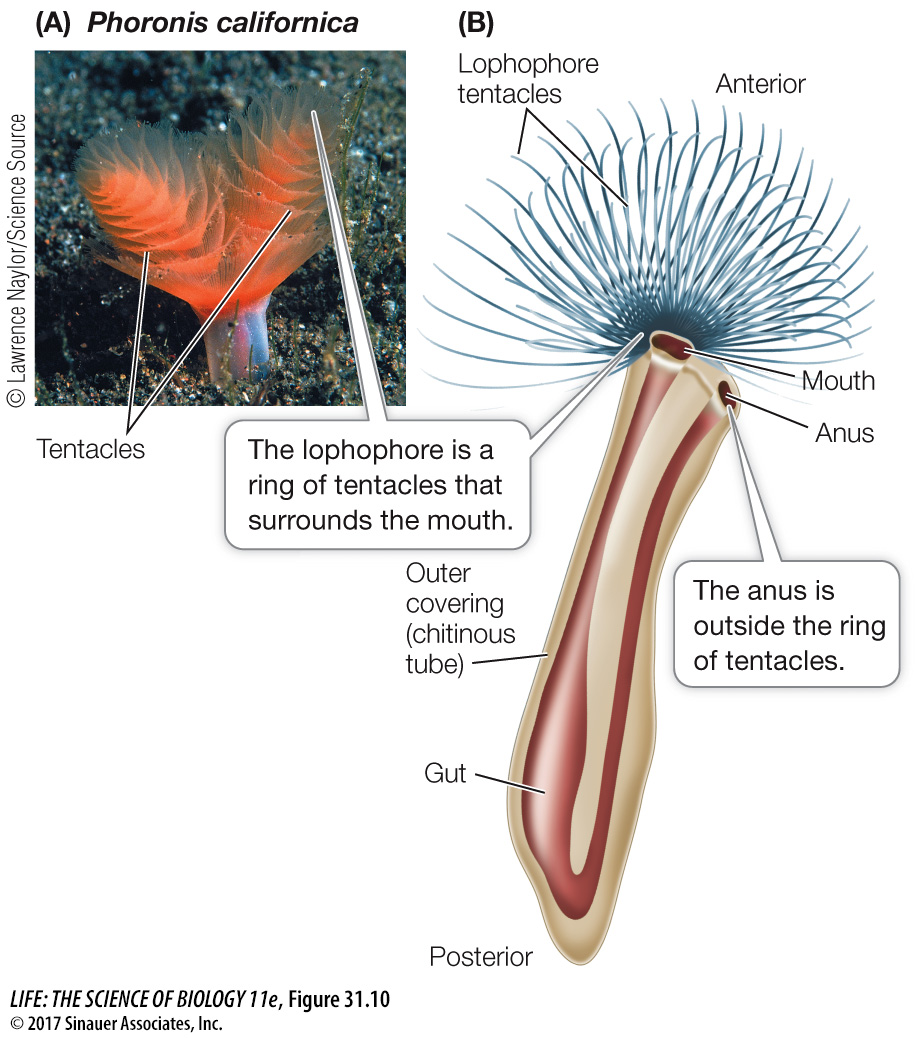Brachiopods and phoronids use lophophores to extract food from the water
Recall that the bryozoans and entoprocts use a lophophore to feed. Brachiopods and phoronids also feed using a lophophore, but this structure may have evolved separately in these groups. Although neither the brachiopods nor the phoronids are represented by many living species, the brachiopods (which have hard external shells and thus leave an excellent fossil record) are known to have been much more abundant in the past.

BRACHIOPODS Brachiopods (lampshells) are solitary marine animals. They have a rigid shell that is divided into two parts connected by a ligament (Figure 31.9). The two halves can be pulled shut to protect the soft body. Brachiopods superficially resemble bivalve mollusks, but shells have evolved independently in the two groups. The two halves of the brachiopod shell are dorsal and ventral, rather than lateral as in bivalves. The lophophore is located within the shell. The beating of cilia on the lophophore draws water into the slightly opened shell. Food is trapped in the lophophore and directed to a ridge, along which it is transferred to the mouth.

Most brachiopods are 4 to 6 centimeters long. They live attached to a solid substrate or embedded in soft sediments. Most species are attached by means of a short, flexible stalk that holds the animal above the substrate. Gases are exchanged across body surfaces, especially the tentacles of the lophophore. Most brachiopods release their gametes into the water, where they are fertilized. The larvae remain among the plankton for only a few days before they settle and develop into adults.
666
Brachiopods reached their peak abundance and diversity in Paleozoic and Mesozoic times. More than 26,000 fossil species have been described. Only about 450 species are known to survive, but they remain common in some marine environments.
PHORONIDS The ten known species of phoronids are small (5–
